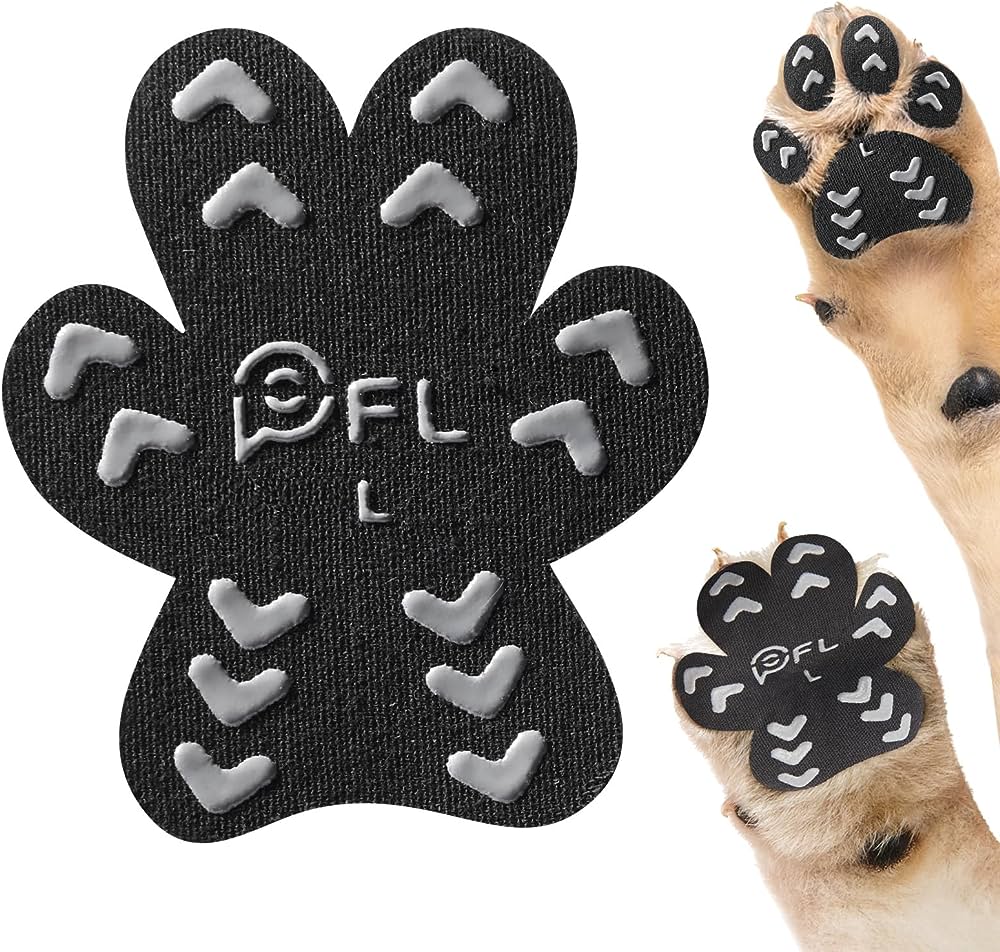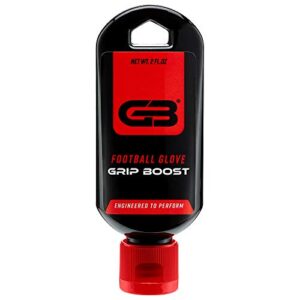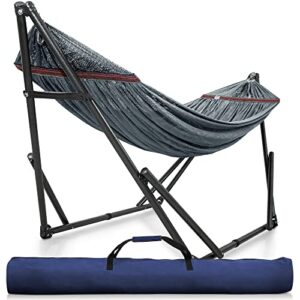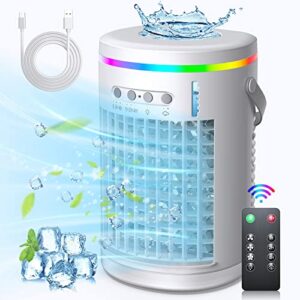Contents
- 1. The Importance Of Dog Pad Traction
- 2. Understanding Dog Paw Anatomy
- 3. Common Causes Of Reduced Traction In Dogs
- 4. Different Types Of Dog Pad Traction Products
- 5. Tips For Improving Dog Pad Traction
- 6. Choosing The Right Dog Pad Traction Solution
- 7. How To Apply Paw Wax Or Balm For Maximum Grip
- 8. Putting Traction Socks Or Booties On Your Dog
- 9. Applying Paw Pad Traction Pads For Added Stability
- 10. Conclusion And Final Thoughts
- Frequently Asked Questions For Dog Pad Traction
- Conclusion
Dog pad traction is essential for preventing slippage and providing stability for dogs. This article explores the benefits of using traction pads, which help to improve grip, balance, and confidence for dogs while walking or performing activities.
Additionally, it discusses the various types of traction pads available in the market, including booties, socks, and adhesive pads, as well as their features and suitability for different breeds and situations. Whether your dog requires traction for medical reasons or simply needs extra support on smooth surfaces, understanding the options and benefits of dog pad traction can help you make an informed decision for your furry friend.
1. The Importance Of Dog Pad Traction
Dog pad traction is essential for preventing slips and injuries. Providing your furry friend with proper traction helps them maintain stability and confidence while walking, running, or playing on different surfaces. Keep your pup safe and secure with the right type of dog pad traction.
Dog Pad Traction is an essential aspect of your pet’s physical well-being, as it helps to protect their paws from slips and enhances mobility, particularly for aging or injured dogs. By understanding the importance of dog pad traction, you can take the necessary steps to ensure the safety and comfort of your furry friend.
Protecting Your Pet’S Paws From Slips:
- Regularly check and trim your dog’s nails to prevent overgrowth, which can affect their traction on various surfaces.
- Opt for footwear such as dog boots or socks with rubber soles when walking your dog on slippery surfaces like ice or wet floors.
- Use paw balms or waxes to moisturize and provide grip to your dog’s paw pads, especially during extreme weather conditions.
- Clean your pet’s paws after walks, eliminating any debris or substances that may hinder their ability to maintain traction.
- Invest in suitable floor coverings or rugs that offer better grip and traction, particularly on smooth or slippery surfaces around your home.
- Provide your dog with a well-maintained and properly installed ramp or stairs, especially for navigating stairs or getting in and out of vehicles.
- Consider using paw traction pads or grip-enhancing sprays to improve traction in challenging environments.
Enhancing Mobility For Aging Or Injured Dogs:
- Provide soft, non-slip bedding to support and comfort aging or injured dogs during rest periods.
- Arrange your home environment to minimize obstacles and create ease of movement for your dog.
- Incorporate low-impact exercises, such as swimming or gentle walks, to improve muscle strength and joint flexibility.
- Consult with your veterinarian about mobility aids, such as braces or harnesses, to provide extra support and stability for your pet.
- Use non-slip mats or rugs to cover slippery surfaces, minimizing the risk of falls and injuries.
- Utilize pet-friendly ramps or steps to assist your dog with accessing elevated areas, such as beds or sofas.
- Consider providing your dog with joint supplements or anti-inflammatory medications to alleviate any discomfort and improve mobility.
By prioritizing your dog’s pad traction, you can safeguard their paws from slips and boost their mobility, offering them a better quality of life. Ensure to consider your pet’s specific needs and consult with a veterinarian for personalized guidance.
2. Understanding Dog Paw Anatomy
Dog paw anatomy plays a crucial role in understanding dog pad traction. By comprehending the nuances of a dog’s paw structure, pet owners can ensure better grip and stability for their furry friends on various surfaces.
The Structure Of A Dog’S Paw Pads
When it comes to having a better understanding of dog pad traction, it is essential to first delve into the anatomy of a dog’s paw pads. These specialized structures play a crucial role in providing grip and stability for our canine companions.
Here’s a closer look at the structure of a dog’s paw pads:
- Paw Pad Layers: The paw pad consists of several layers, each serving a unique purpose. These layers include the thick outer layer, known as the stratum corneum, which acts as a protective barrier. Beneath the stratum corneum lies the dermis, containing sweat glands that help with temperature regulation.
- Paw Pad Cushioning: One of the remarkable features of the paw pads is their ability to cushion the impact during walking or running. The subcutaneous layer of fat within the pads acts like a shock absorber, minimizing the stress on the bones and joints.
- Paw Pad Sensory Functions: Dog paw pads are also rich in sensory receptors, making them incredibly sensitive. The pads enable dogs to perceive various textures, temperatures, and terrain features. This sensitivity allows them to adapt their movements and adjust their grip according to different surfaces.
- Paw Pad Hair: You might have noticed tiny hairs on your dog’s paw pads. These hairs provide additional traction on slippery surfaces, enhancing their grip and stability.
How Paw Pads Affect Traction And Grip
Now that we’ve delved into the structure of a dog’s paw pads, let’s explore how they impact a dog’s traction and grip. Understanding these implications can help us address any potential issues related to paw pad health and support our furry friends’ mobility.
Here’s a closer look:
- Traction on Various Surfaces: The texture and thickness of a dog’s paw pads greatly determine their ability to gain traction on different surfaces. Paw pads that are too smooth or thin may result in reduced grip on slick surfaces, making it harder for dogs to traverse such terrains.
- Enhanced Grip on Rough Terrain: Rough or uneven terrain can pose a challenge for our canine companions. However, the unique structure of paw pads provides dogs with enhanced grip and stability on these surfaces. The layers of the paw pad, combined with sensory receptors, allow dogs to navigate through challenging terrains more effectively.
- Protection from Extreme Elements: Dog paw pads offer protection from extreme weather conditions. During scorching summers or freezing winters, paw pads act as insulation, preventing heat or cold from directly affecting the sensitive tissues and structures within a dog’s paws.
- Moisture Management: Excessive moisture, such as rain or snow, can affect a dog’s paw pad grip. However, the specialized layers in the paw pads help manage moisture, thereby reducing the chances of slipping on wet surfaces.
- Adaptability to Different Surfaces: Dogs are versatile creatures, and their paw pads play a vital role in their adaptability to varying surfaces. The ability to adjust grip pressure and traction allows dogs to traverse different terrains, whether it’s sand, grass, or rocky pathways.
Understanding the structure and function of a dog’s paw pads provides a glimpse into the intricate systems that enable dogs to move with agility and stability. By recognizing the role of paw pads in traction and grip, we can better support our furry friends’ paw health and overall mobility.
3. Common Causes Of Reduced Traction In Dogs
Reduced traction in dogs can be caused by various factors, including worn-out paw pads, injury or infection, and certain medical conditions. Improving dog pad traction is important to prevent slips and falls, and it can be achieved through proper grooming, regular paw pad care, and using paw pad protection products.
Environmental Factors That Can Impact Traction:
- Slippery surfaces: Dogs may struggle to maintain grip on slippery surfaces such as polished floors, ice, wet grass, or smooth tiles.
- Loose terrain: Walking on loose gravel, sand, or muddy ground can reduce traction and make it difficult for dogs to gain a firm footing.
- Uneven surfaces: Dogs may experience reduced traction on uneven surfaces, such as cobblestones, rocky terrains, or bumpy paths.
- Extreme weather conditions: Snow, sleet, rain, or ice can create challenging conditions for dogs, causing a decrease in paw pad traction.
Health Conditions That Affect Paw Pad Grip:
- Dry or cracked paw pads: Dehydration or exposure to harsh elements can lead to dryness and cracking of the paw pads, reducing their ability to grip.
- Allergies or dermatitis: Dogs with skin allergies or dermatitis may experience inflammation or irritation of the paw pads, causing discomfort and affecting their traction.
- Paw pad injuries: Cuts, burns, or blisters on the paw pads can impair traction and cause pain or discomfort for the dog.
- Nail problems: Overgrown or ingrown nails can alter a dog’s gait and affect their ability to grip surfaces properly.
Understanding the common causes of reduced traction in dogs is essential for maintaining their safety and preventing accidents. Environmental factors like slippery surfaces, loose terrain, uneven surfaces, and extreme weather conditions can all contribute to decreased paw pad traction. Additionally, certain health conditions, such as dry or cracked paw pads, allergies or dermatitis, paw pad injuries, and nail problems, can affect a dog’s ability to maintain grip.
By being aware of these factors, dog owners can take necessary precautions to keep their furry friends safe and ensure optimal paw pad grip.
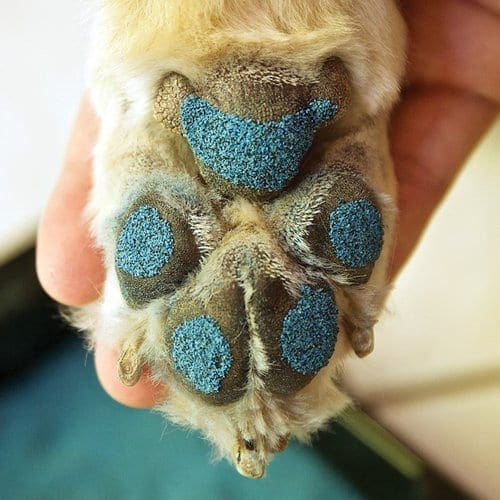
Credit: pawtology.com
4. Different Types Of Dog Pad Traction Products
Discover the various dog pad traction products available for enhanced grip and stability. These products offer different solutions to prevent slipping and protect your furry friend’s paws on various surfaces.
Paw Wax And Balms For Enhanced Grip
Paw wax and balms are excellent products that provide enhanced traction for dogs’ paw pads. These products are formulated with natural ingredients that create a protective barrier on the pads, improving grip on various surfaces. Here are some key benefits of using paw wax and balms:
- Moisturizes the paw pads, preventing dryness and cracking.
- Creates a non-slip surface for better grip on slippery floors, tiles, or icy surfaces.
- Protects against hot pavement, salt, and other harsh elements during outdoor activities.
- Easy to apply and long-lasting, providing continuous traction for extended periods.
- Suitable for dogs of all sizes and breeds.
Overall, paw wax and balms are a convenient and efficient solution to enhance your dog’s paw pad traction, ensuring their safety and comfort in various environments.
Paw Traction Socks And Booties For Added Traction
Paw traction socks and booties are another great option to enhance your dog’s grip on different surfaces. These accessories are designed with non-slip rubber soles or silicone grips that provide excellent traction. Here are the main advantages of using paw traction socks and booties:
- Protects sensitive paws from hot or cold surfaces, sharp objects, or allergens.
- Improves traction on hardwood floors, tiles, slippery stairs, or outdoor terrains.
- Reduces the risk of accidental slipping and injuries during walks or playtime.
- Adjustable straps or snug-fitting designs ensure a secure and comfortable fit.
- Provides an extra layer of insulation during colder weather conditions.
Whether your dog needs added traction indoors or outdoors, paw traction socks and booties are a reliable choice to keep their paws secure and prevent accidents.
Paw Pad Traction Pads For Extra Grip
Paw pad traction pads are specifically designed to enhance grip and provide extra traction for dogs with sensitive or slippery paw pads. These adhesive pads can be applied directly to the paw pads, offering stability and confidence while walking or running.
Here are the key features of paw pad traction pads:
- Thin and flexible design allows for natural paw movement and comfort.
- Adhesive backing securely attaches the pads to the paw pads without causing irritation.
- Provides added traction on smooth surfaces such as hardwood floors, tiles, or linoleum.
- Reduces the risk of sliding or splaying legs on slippery or uneven terrains.
- Suitable for dogs with paw pad injuries, arthritis, or senior dogs with reduced grip.
Paw pad traction pads are an excellent option to increase traction for dogs with existing paw pad issues or to prevent accidents on slippery surfaces. They offer a practical and reliable solution for ensuring your furry friend’s safety and stability.
5. Tips For Improving Dog Pad Traction
Improve your dog’s traction on hard surfaces with these 5 helpful tips. Increase grip and prevent slips and injuries with simple techniques, ensuring your furry friend stays safe and secure.
Dog Pad Traction
Dogs need proper traction on their paws to maintain stability and prevent accidents. Improving dog pad traction can be achieved through regular maintenance and care, as well as specific training and exercise techniques. In this section, we will explore five tips to enhance your dog’s paw pad traction and help them move confidently and securely.
Regular Paw Pad Maintenance And Care:
Taking care of your dog’s paw pads is essential for maintaining optimal traction. Here are a few important steps you can follow:
- Keep the paw pads clean and free from dirt, debris, and excess hair: Regularly inspect and clean your dog’s paw pads to ensure they are free from any foreign particles or excessive fur that can hinder traction.
- Moisturize the paw pads: Apply a pet-safe moisturizer or paw balm to keep the paw pads hydrated. Dry and cracked paw pads can lead to traction issues, so regular moisturizing can help prevent this.
- Trim the nails: Long nails can affect your dog’s gait and stability. Keep them trimmed to an appropriate length to avoid slipping and sliding on various surfaces.
- Check for injuries or irritations: Regularly inspect your dog’s paw pads for any cuts, wounds, or irritations. These can affect their traction ability and should be treated promptly by a veterinarian.
Training And Exercise To Enhance Paw Stability:
In addition to regular maintenance, specific training and exercise techniques can improve your dog’s overall paw stability and traction. Here are some effective methods you can incorporate into your routine:
- Balance exercises: Engage your dog in activities that challenge their balance, such as walking on narrow planks or wobble boards. These exercises strengthen their paw muscles and promote better traction.
- Paw massages: Gently massage your dog’s paw pads to increase blood circulation and improve their paw grip. This can be done by applying slight pressure with your fingertips or using a soft brush.
- Different surface training: Introduce your dog to various surfaces such as grass, sand, gravel, and hardwood floors. Gradually expose them to different textures to help them adapt and gain confidence in navigating different terrains.
- Paw strength training: Use paw-specific toys or exercises, like encouraging your dog to scratch at a textured surface or play with puzzle toys that require paw dexterity. These activities help strengthen their paw muscles and enhance traction.
- Positive reinforcement: Reward your dog with treats, praise, or playtime when they demonstrate good paw grip and stability. This reinforces their positive behavior and motivates them to maintain proper traction.
By incorporating these tips into your dog’s routine, you can significantly improve their paw pad traction and help them move confidently in various environments. Remember to consult with a professional trainer or veterinarian for personalized advice based on your dog’s specific needs.
Emphasizing regular maintenance and targeted training exercises will contribute to your dog’s overall paw stability and enhance their ability to move securely.
6. Choosing The Right Dog Pad Traction Solution
Looking for the perfect dog pad traction solution? This guide helps you choose the right option to keep your furry friend safe and secure.
Choosing The Right Dog Pad Traction Solution
When it comes to selecting the right dog pad traction solution for your furry friend, there are several factors to consider. It’s essential to choose a product that not only provides traction but also ensures your dog’s safety and comfort.
To guide you in making the best decision, here are some important factors to keep in mind:
Factors To Consider When Selecting Traction Products:
- Material: Opt for dog pad traction products that are made from a durable and non-slip material.
- Size: Ensure that the traction solution is suitable for your dog’s paw size. It should neither be too small nor too large.
- Ease of Use: Look for products that are easy to put on and take off. Velcro straps or adhesive pads can be convenient options.
- Versatility: Consider if the traction solution can be used both indoors and outdoors. This ensures that your dog has secure footing in various environments.
- Maintenance: Check how easy it is to clean the traction product. Some may require manual cleaning, while others can be washed in a machine.
Consulting With Your Veterinarian For Recommendations:
It is always a good idea to consult with your veterinarian before purchasing any dog pad traction products. They can provide valuable insights based on your dog’s specific needs and any existing medical conditions. Your veterinarian may recommend a particular brand or type of traction solution that suits your dog’s requirements.
By discussing your options with a professional, you can make an informed decision that prioritizes your dog’s well-being.
Remember, the safety and comfort of your furry friend should be the top priority when choosing a dog pad traction solution. By considering factors such as material, size, ease of use, versatility, and maintenance, and consulting with your veterinarian, you can select the most appropriate product that ensures your dog’s paws stay firmly planted on the ground, no matter the surface.
7. How To Apply Paw Wax Or Balm For Maximum Grip
Learn how to apply paw wax or balm to enhance your dog’s pad traction and prevent slipping. Increase grip and ensure safety by following these simple steps.
Dog Pad Traction: How To Apply Paw Wax Or Balm For Maximum Grip
Dogs, just like humans, need proper traction to prevent slips and falls, especially on slippery surfaces. Paw wax or balm is an effective solution to enhance your furry friend’s paw grip. In this section, we will guide you through the step-by-step process of applying paw wax or balm for maximum traction.
We will also provide you with some precautions and tips to ensure an effective application.
Step-By-Step Guide To Applying Paw Wax Or Balm
To maximize the grip and improve your dog’s paw traction, follow these simple steps when applying paw wax or balm:
- Start by ensuring your dog’s paw pads are clean and dry. Wipe their paws gently with a clean cloth to remove any dirt or moisture.
- Open the container of paw wax or balm and apply a small amount to your fingertips. Start with a pea-sized amount for each paw pad.
- Rub the wax or balm between your fingers to warm it up and make it easier to spread on the paw pads.
- Carefully and gently apply the wax or balm to your dog’s paw pads. Make sure to cover the entire pad, including the edges, for maximum grip.
- Massage the wax or balm onto the paw pads in a circular motion, ensuring it is evenly distributed on each paw.
- Once all the paw pads are covered, allow a few moments for the wax or balm to dry and set. This will prevent your dog from immediately licking it off.
- Monitor your dog to ensure they do not immediately lick off the wax or balm. Distracting them with a toy or treat can help divert their attention.
- For optimal results, apply paw wax or balm before any outdoor activity or walking on slippery surfaces. Reapply as needed, especially if your dog’s paws become wet.
Precautions And Tips For Effective Application
Applying paw wax or balm requires some precautions and tips to ensure its effectiveness. Here are a few considerations:
- Avoid using paw wax or balm on open wounds or irritated paw pads. It is essential to let any injuries heal before applying any product.
- Start with a small amount of wax or balm, as excessive application may cause your dog’s paws to become too slippery.
- Pay attention to your dog’s behavior during the application process. Some dogs may be sensitive or uncomfortable with their paws being touched. Take breaks if necessary and provide positive reinforcement.
- Regularly check your dog’s paw pads for any signs of irritation or allergic reactions. If you notice any unusual symptoms, discontinue use and consult your veterinarian.
- Store the paw wax or balm in a cool, dry place, away from direct sunlight. Excessive heat can cause the product to melt or lose its effectiveness.
Remember, paw wax or balm is not a permanent solution for traction issues. It is essential to regularly inspect your dog’s paw pads and provide proper care and maintenance to ensure their overall paw health and grip.
8. Putting Traction Socks Or Booties On Your Dog
Enhance your dog’s paw grip with traction socks or booties, providing better stability and preventing slips and falls on smooth surfaces. Keep your furry friend safe and secure with these practical and stylish accessories.
Putting Traction Socks Or Booties On Your Dog
Dog pad traction is essential for preventing slips and ensuring your furry friend’s safety, particularly on slippery surfaces. One effective way to enhance traction is by using traction socks or booties. These specialized footwear options provide grip and stability, reducing the risk of accidents.
However, it is crucial to consider proper fitting and selection, as well as train your dog to wear them comfortably.
Proper Fitting And Selection Of Traction Socks Or Booties
To ensure that the traction socks or booties effectively serve their purpose, it is important to follow these guidelines:
- Measure accurately: Take precise measurements of your dog’s paws to find the right size. Measure the width and length, ensuring a snug fit without constriction.
- Consider the design: Look for socks or booties that have non-slip soles specifically designed for traction. The material should be durable, yet flexible, to provide comfort and mobility.
- Check closures: Opt for socks or booties with secure closures, such as Velcro straps or adjustable fasteners. This will prevent the footwear from slipping off during activity.
Training Your Dog to Wear Traction Socks or Booties:
Introducing your dog to wearing traction socks or booties may require some patience and training. Use the following tips to help your pup adjust:
- Gradual Initially, let your dog sniff and inspect the socks or booties to familiarize themselves with the new accessory.
- Positive reinforcement: Reward your dog with treats and praise whenever they show tolerance or acceptance of the socks or booties. This will create a positive association.
- Short wearing sessions: Begin by putting the socks or booties on your dog for short periods indoors. Gradually increase the duration to allow your dog to get accustomed to the feeling.
- Distractions and activities: Engage your dog in activities they enjoy while wearing the socks or booties. This will divert their attention and help them associate the footwear with fun experiences.
Remember, consistency and patience are key when training your dog to wear traction socks or booties. By following these guidelines, you can ensure a proper fit and help your dog embrace these protective accessories to enhance their walking experience.
9. Applying Paw Pad Traction Pads For Added Stability
Increase your dog’s stability with Paw Pad Traction Pads. These pads help provide better grip and reduce slipping on different surfaces, ensuring your dog stays safe and steady.
Dog Pad Traction: Applying Paw Pad Traction Pads For Added Stability
Having a dog with traction issues can be challenging, especially when it comes to their safety and mobility. Fortunately, there are solutions available to help enhance their paw pad grip. One such solution is the application of paw pad traction pads.
These pads provide added stability for your dog, allowing them to move around with confidence and ease. In this section, we will explore how to install paw pad traction pads on various surfaces and learn about their maintenance and replacement.
Installing Paw Pad Traction Pads On Various Surfaces:
Installing paw pad traction pads is a simple process that can be done at home. Whether you have hardwood floors, tile, or other slippery surfaces, these pads can be an effective solution. Here’s how to install them:
- Start by cleaning your dog’s paws: Ensure that your dog’s paws are clean and dry before applying the traction pads. This will help the pads adhere better to their paw pads.
- Select the right size: Choose the appropriate size of traction pad for your dog’s paw size. Measure their paw width to ensure a proper fit.
- Peel and stick: Peel off the backing of the traction pad and carefully place it on your dog’s paw pad. Press down firmly to ensure a secure attachment.
- Monitor the pads: Keep an eye on the traction pads to ensure they stay in place. If they start to peel off or show signs of wear and tear, consider replacing them.
Maintenance And Replacement Of Paw Pad Traction Pads:
To ensure the effectiveness of the paw pad traction pads, it’s important to maintain and replace them as needed. Here are some tips:
- Regular inspection: Periodically check the traction pads for any signs of damage or wear. If you notice any peeling or loss of grip, it may be time to replace them.
- Cleanliness: Keep the paw pads clean by wiping them with a damp cloth. This will prevent the accumulation of dirt and debris, which can affect the pads’ traction.
- Replacement: When it’s time to replace the paw pad traction pads, remove the old ones by peeling them off gently. Clean the paw pads and follow the installation process mentioned earlier to apply new pads.
By applying paw pad traction pads on various surfaces and maintaining them properly, you can improve your dog’s stability and help them regain their confidence. Ensure to regularly inspect and replace the pads when needed, ensuring your furry friend enjoys the benefits of enhanced traction.
10. Conclusion And Final Thoughts
Dog pad traction is a crucial aspect to consider for pet owners. Enhancing your dog’s grip on surfaces can prevent slips and falls, providing them with a safe and comfortable environment. It is essential to prioritize your dog’s well-being by investing in high-quality dog pad traction products.
Summary Of The Benefits Of Dog Pad Traction
Maintaining your pet’s safety and mobility is essential, and dog pad traction can greatly contribute to achieving this goal. By providing a secure grip on various surfaces, dog pad traction helps prevent slips, falls, and potential injuries. Additionally, it aids in improving your dog’s stability and confidence, giving them the freedom to move comfortably.
Let’s explore the key points and benefits of using dog pad traction:
- Enhanced Grip: Dog pad traction products, such as paw wax, booties, or grip sprays, are designed to increase the traction between your dog’s paws and slippery surfaces. This allows them to walk, run, and play without the risk of accidents.
- Injury Prevention: By minimizing slipping and sliding, dog pad traction reduces the likelihood of your pet suffering from strains, sprains, or more severe injuries. It is particularly beneficial for senior dogs or those recovering from surgery, providing them with the stability and confidence they need.
- Increased Mobility: When dogs struggle to maintain their footing, they may become hesitant or anxious, limiting their movement. Dog pad traction empowers them to roam freely, explore their surroundings, and engage in physical activities without fear of falling.
- Versatile Solutions: Dog pad traction products are available in various forms to suit different needs and preferences. Whether you opt for wax to enhance paw grip, booties for comprehensive paw protection, or grip sprays for a quick and easy solution, there is something for every dog.
- Comfort and Convenience: Dog pad traction options are designed with your pet’s comfort in mind. The materials used are usually soft, breathable, and non-irritating, ensuring a comfortable wearing experience. Furthermore, most traction products are lightweight and easy to put on and take off, making them convenient for both you and your dog.
Ensuring your pet’s safety and mobility is crucial for their overall well-being and happiness. With dog pad traction, you can provide them with the confidence to navigate any surface with ease, reducing the risk of slips, falls, and injuries. Invest in dog pad traction today and witness the positive impact it can have on your furry friend’s life.
Frequently Asked Questions For Dog Pad Traction
What Can You Put On Dogs Paws To Stop Them From Slipping?
To prevent dogs from slipping, you can apply paw wax or non-slip dog socks.
Are Paw Grip Pads Safe For Dogs?
Yes, paw grip pads are safe for dogs. These pads provide traction and stability on slippery surfaces. They are made from non-toxic materials and are designed specifically for paw protection. Paw grip pads help prevent slips and falls, reducing the risk of injury for dogs.
They are easy to apply and remove, and do not cause any harm or discomfort to dogs. Regular use of paw grip pads can improve a dog’s confidence and mobility, especially for older or injured dogs. It is important to choose high-quality grip pads that are the right size for your dog’s paws, and to follow the instructions for proper application.
Overall, paw grip pads are a safe and effective way to enhance your dog’s grip on various surfaces.
How Do I Keep My Dogs Paws From Slipping On Hardwood Floors?
To prevent your dog’s paws from slipping on hardwood floors, start by trimming their nails regularly, as long nails can reduce traction. Another option is to use paw wax or balm, which provides a non-slip surface. Additionally, placing carpet runners or rugs in high-traffic areas can give your dog better grip.
You can also try using anti-slip mats or grip socks made specifically for dogs. Another helpful tip is to keep your dog’s fur on their paws trimmed, as long hair can cause slipping. Lastly, consider using paw grips or booties with rubber soles to increase traction on smooth surfaces.
By following these steps, you can help keep your furry friend safe and prevent them from slipping on hardwood floors.
What Feature On A Dog’S Footpad Provides Traction For Walking?
Dog’s footpad has a feature that provides traction for walking. The traction comes from the presence of paw pads, which are thick, tough, and textured. These pads have a rough surface that grips different types of surfaces, offering stability and traction to the dog.
The texture of the pads helps to prevent slipping on smooth surfaces and provides grip on uneven terrains. The pads also act as cushions, protecting their paws from injury and providing shock absorption while walking, running, or jumping. The combination of thickness, toughness, and texture enables dogs to navigate various surfaces and terrain with confidence and stability.
Conclusion
Providing your dog with proper pad traction is essential for their safety and overall well-being. Whether it is through using paw wax, booties, or traction mats, there are various options available to improve your dog’s grip on different surfaces. By enhancing their traction, you reduce the risk of slips, falls, and injuries, especially for older dogs with joint issues.
Additionally, maintaining good pad traction can also prevent damage to your floors and furniture. It is crucial to choose the right option that suits your dog’s needs and preferences. Regularly inspecting and caring for your dog’s paws is also essential to ensure optimal pad health.
Ultimately, by prioritizing pad traction, you not only enhance your dog’s safety but also provide them with a comfortable and confident walking experience.

